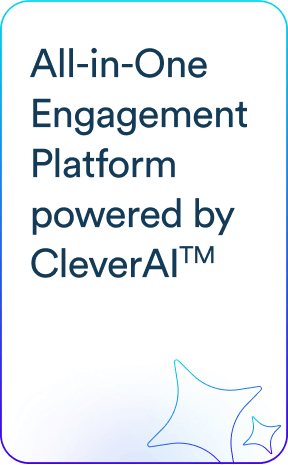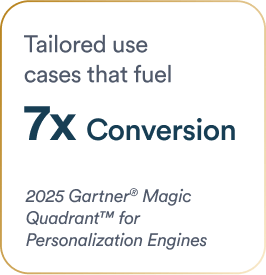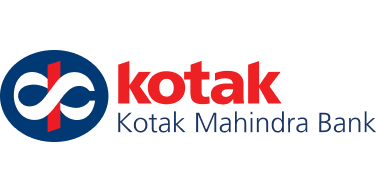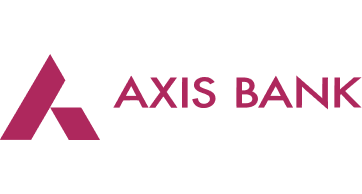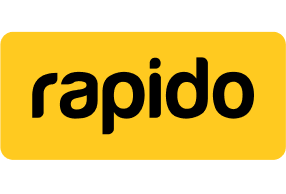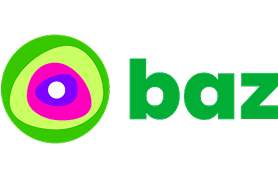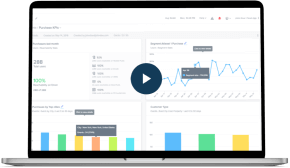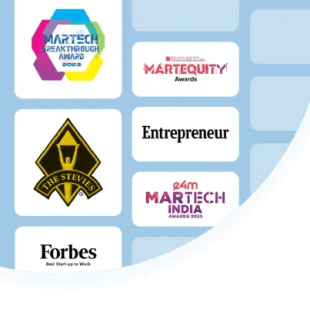Artificial intelligence has evolved rapidly from predictive analytics to generative AI that can produce text, images, and code. Each advancement has expanded what machines can do. Yet, while generative AI can create content, it still depends on humans to decide how and when that content is used. Agentic AI represents the next leap.
Agentic AI combines creativity with autonomy. These systems set objectives, make decisions, and act independently to achieve desired outcomes. For businesses, this shift promises faster, smarter, and more adaptable workflows, opening new possibilities in marketing, sales, customer support, and beyond.
This blog explains the concept of AI agents and explores their business impact, especially in marketing and customer engagement.
What is Agentic AI?
Agentic AI is a type of AI that can plan, act, and adapt autonomously to achieve goals. Unlike traditional fixed-rule programs, these systems exhibit high autonomy, self-correction, and the ability to pursue complex objectives independently.
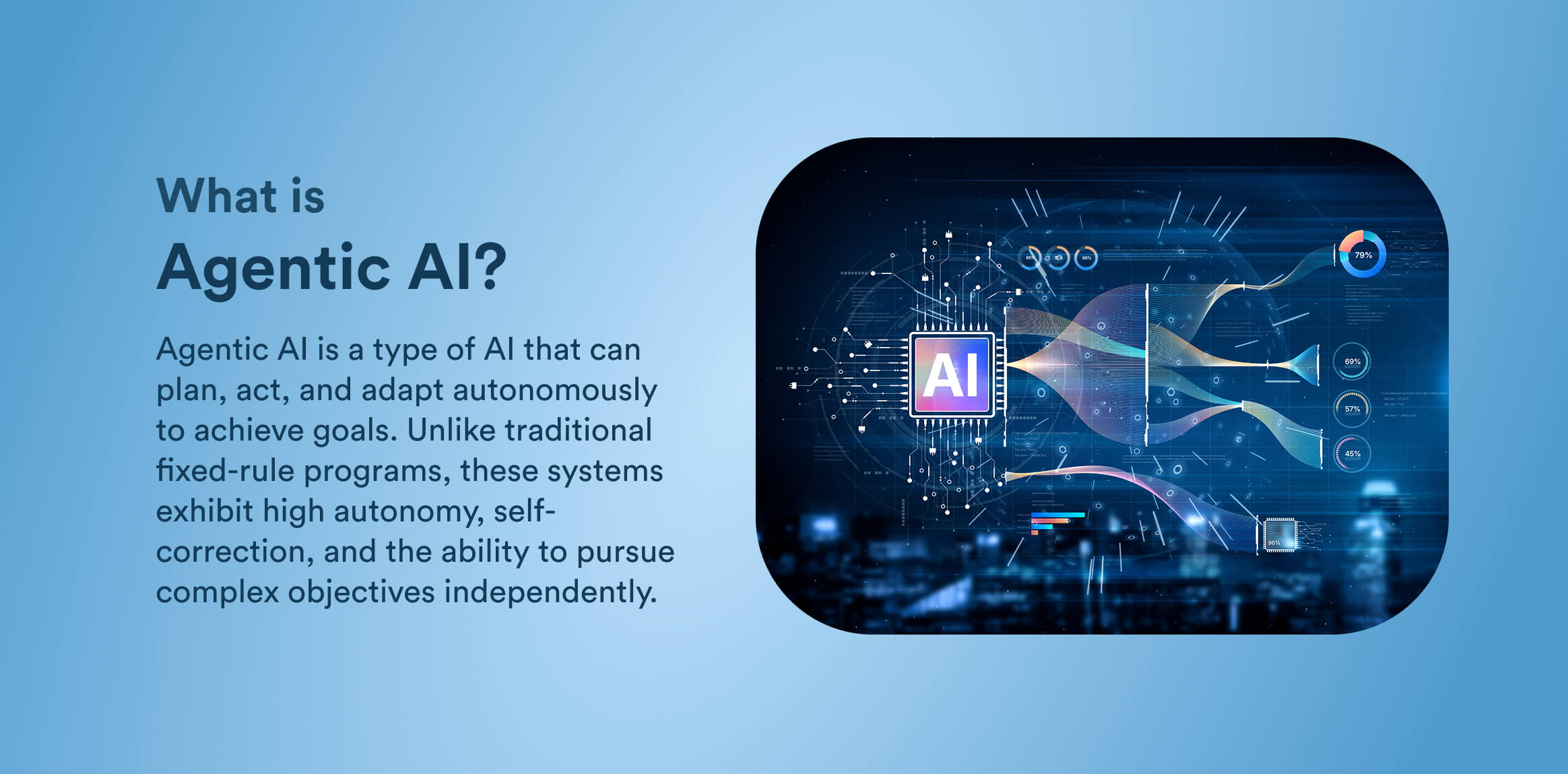
Agentic AI can operate with purpose and adapt to changing conditions. This means the AI can continuously analyze new data, adjust its actions, and learn from outcomes rather than merely following a predefined set of instructions.
It builds on foundational advances such as large language models (LLMs) but takes a step further by connecting intelligence to execution. By integrating predictive signals, user data, and generative capabilities, agentic AI shifts the focus from human-assisted content creation to action-oriented, outcome-driven execution. This makes it a transformative tool for business automation, allowing organizations to not only generate insights but also implement them effectively without continuous human intervention.
Agentic AI vs. Generative AI
While both are rooted in advanced machine learning, their functions and goals differ.
Generative AI focuses on creation, such as producing text, images, code, or even campaign strategies based on learned patterns. It can assist marketers by generating campaign ideas, suggesting audience segments, and drafting personalized content. However, it still relies on human direction or external systems to put those ideas into action.
Agentic AI, on the other hand, extends beyond ideation and generation. It uses those generative outputs, such as copy, creative templates, or segmentation insights, to plan, execute, and optimize actions autonomously.
For instance, an agentic system can take the generative model’s campaign plan, determine which user segments to target, decide the best timing and channels, and trigger the messages automatically, all while learning from performance data to improve future actions.
The table below clarifies the core differences:
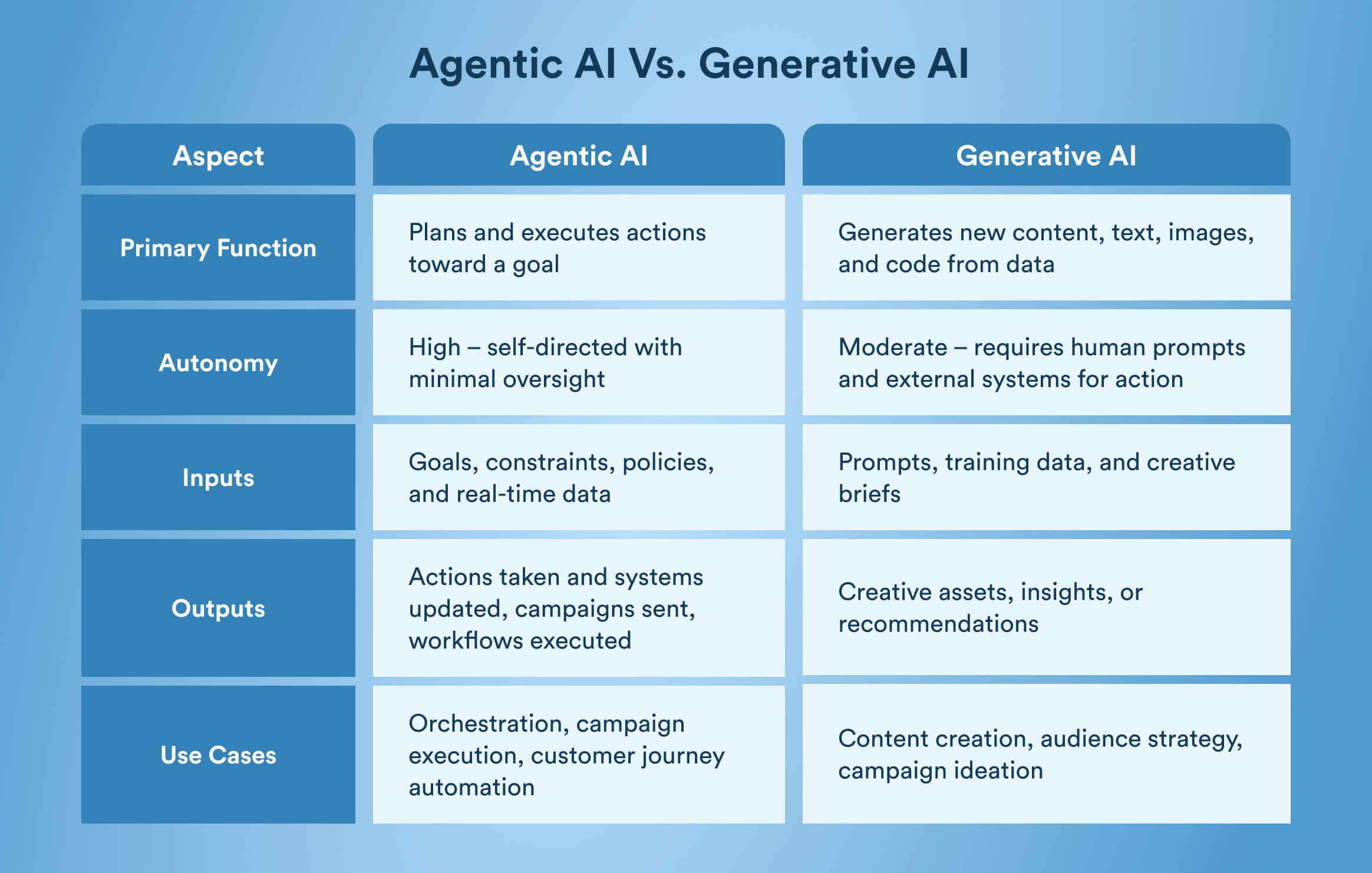
Agentic AI often uses generative models as components. An AI agent could call a language model to draft an email subject line, then autonomously select the target audience and schedule the send. The agent sets and pursues the business goal, using generative output as one tool.
What are AI Agents?
AI agents, sometimes called intelligent agents, are the software entities that embody agentic intelligence. They perceive the environment through data inputs, make decisions, and then execute those actions via the appropriate channel.
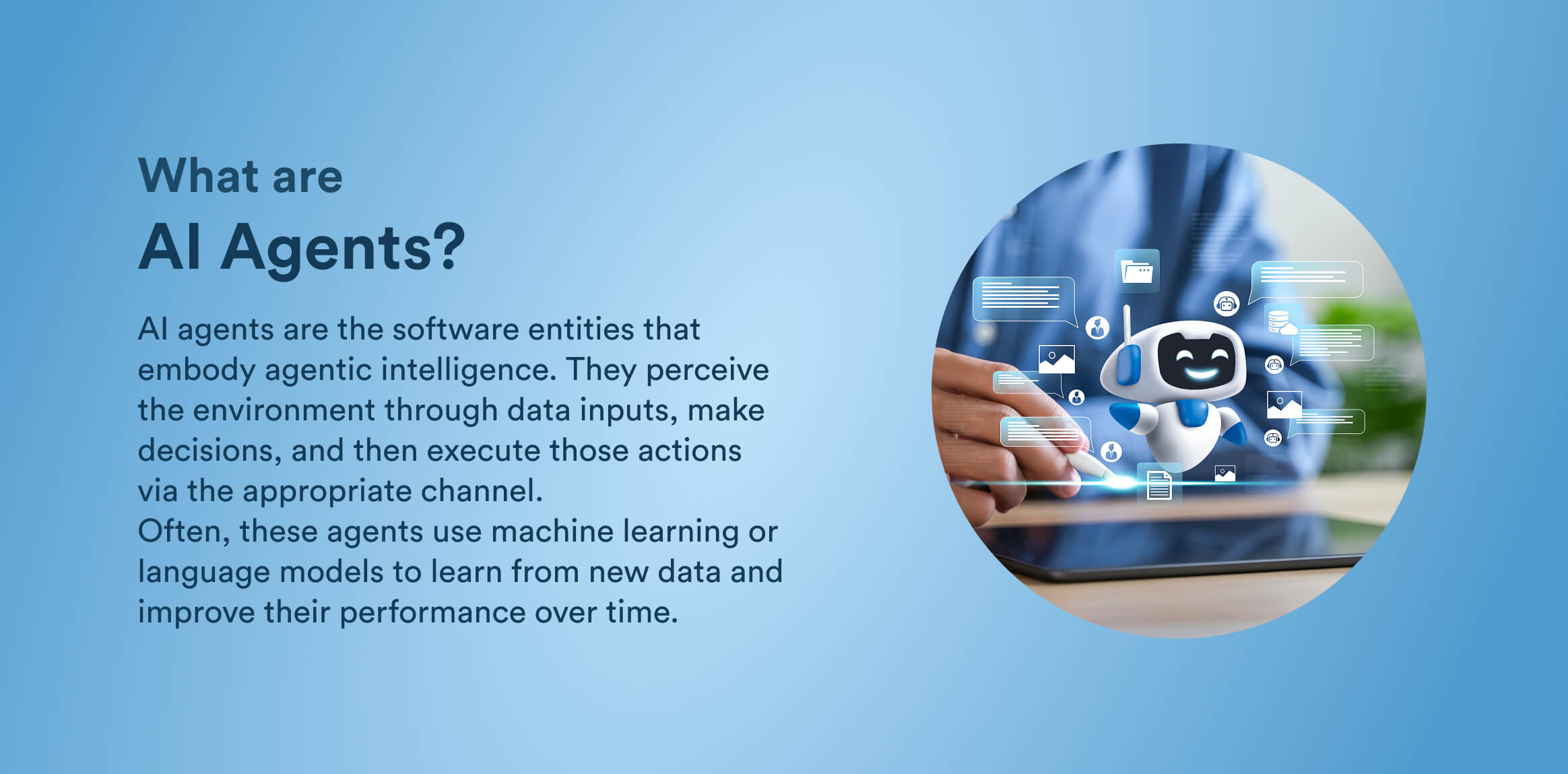
For example, a marketing AI agent might monitor real-time customer data, decide on the next action, such as sending a personalized coupon, and then trigger the message through the email system. Often, these agents use machine learning or language models to learn from new data and improve their performance over time.
In a complete agentic system, multiple agents collaborate. They can specialize in different tasks, with some focusing on data analysis and others on content generation, and share information. For example, one agent might analyze which customer segment is most receptive, and another might use that insight to generate tailored creatives.
In a multi-agent AI system, an orchestrator agent coordinates the activities of specialist agents, ensuring they work in concert to reach the overall objective. The result is a coordinated workflow where each agent handles specific parts of a process, automating complex tasks.
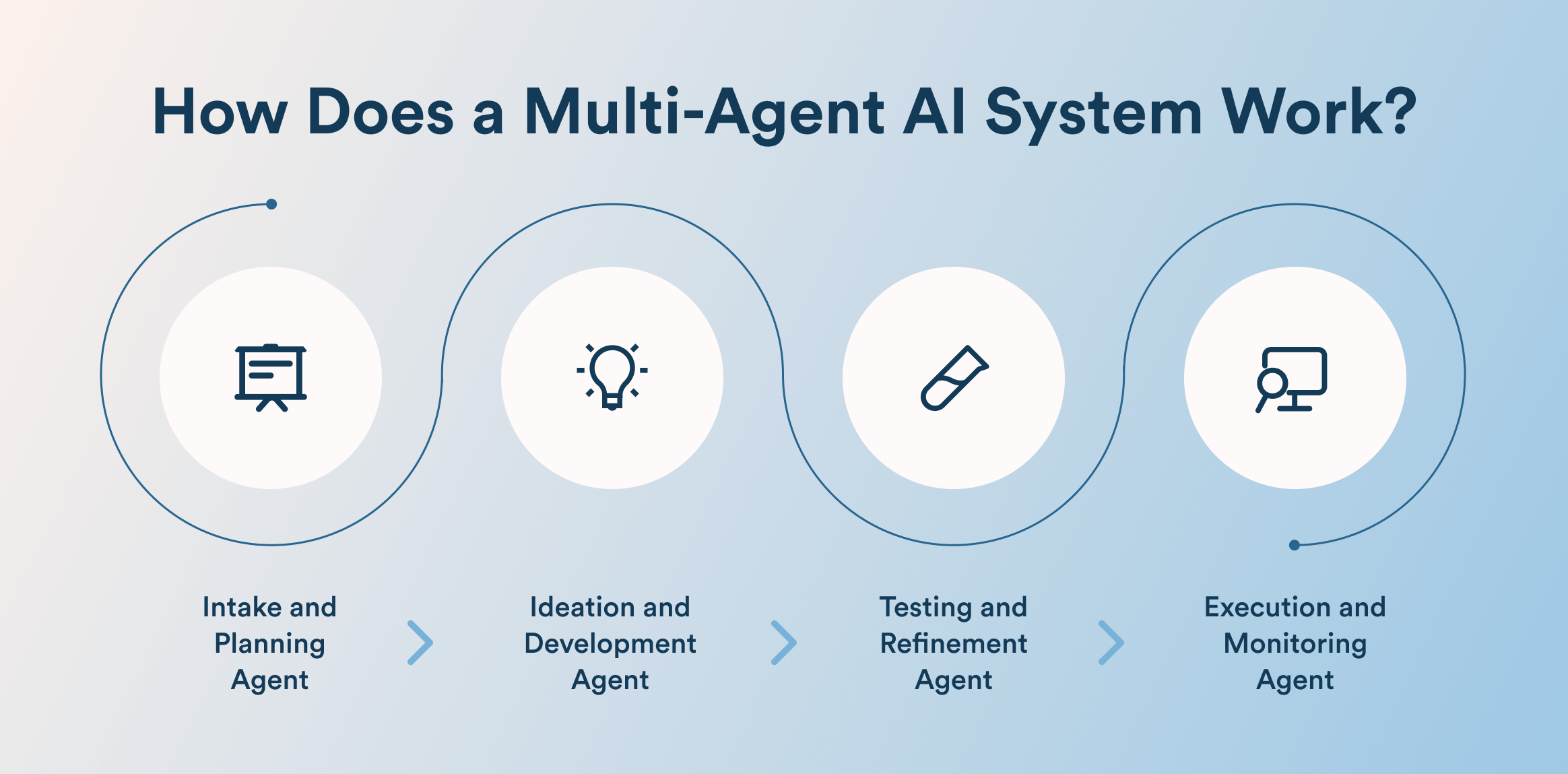
CleverAI’s multi-agent system follows this principle by combining intelligent, role-based agents that collaborate in real time to manage marketing, sales, and customer engagement workflows. Each agent operates autonomously yet shares insights through a central intelligence layer, enabling faster decisions and higher efficiency across teams.
What are the Characteristics of AI Agents?
AI agents possess distinct traits that enable them to perceive, decide, and act effectively in dynamic environments. They are:
- Autonomous: Operates independently without constant human intervention, making decisions and taking actions on its own.
- Proactive: Anticipates future events or needs and act in advance rather than merely reacting.
- Specialized: Excels in specific tasks or domains, leveraging expertise to optimize outcomes.
- Adaptable: Adjusts behavior based on changing environments, new information, or feedback.
- Intuitive: Understands patterns and context, enabling smarter, human-like decision-making.
Types of Agents in AI
AI agents vary in complexity, from simple rule-based systems to learning-driven autonomous entities that perceive, decide, and act to achieve specific goals. Here are some of the most common types:
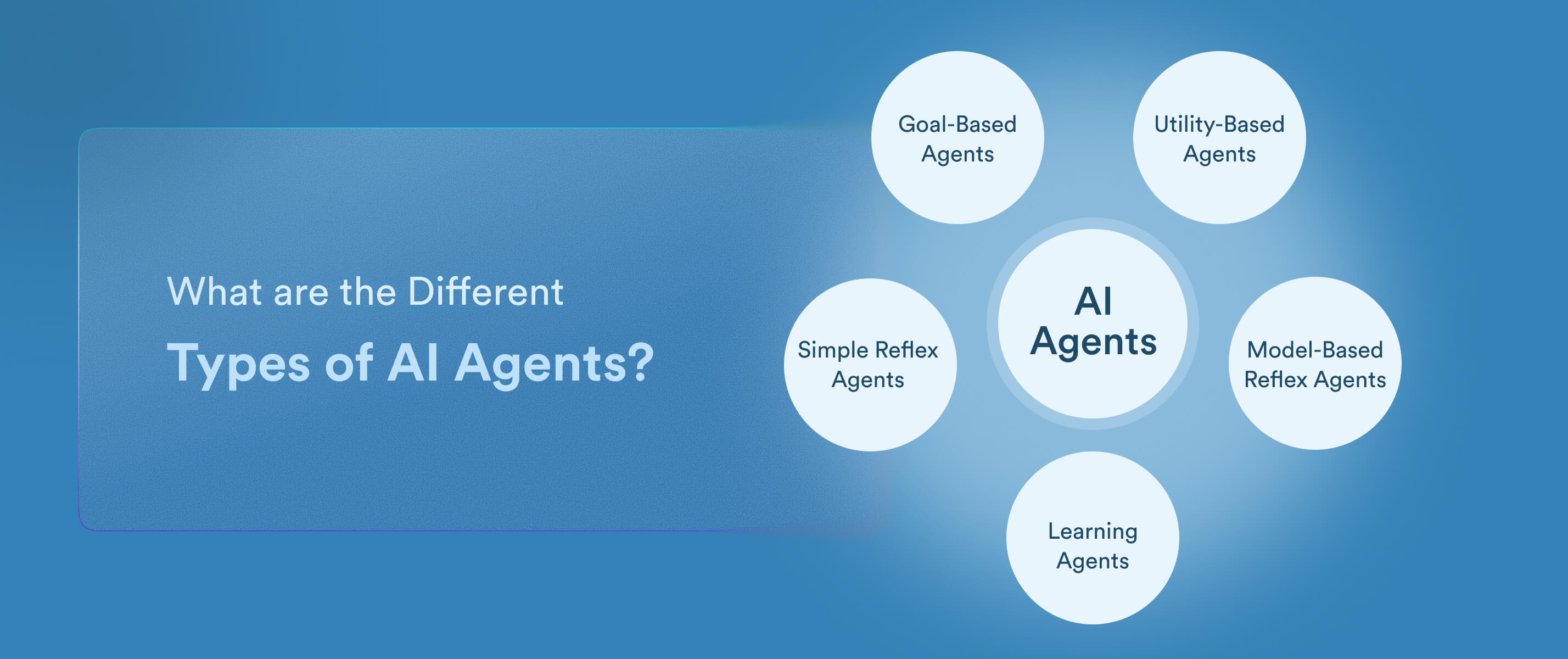
- Simple Reflex Agents: These agents act solely based on predefined rules, reacting to specific inputs without considering past experiences. For example, an email autoresponder that sends a fixed reply whenever it detects a certain keyword.
- Model-Based Reflex Agents: These agents maintain an internal model of the environment to handle more complex situations and make informed decisions. For example, a robotic vacuum that maps rooms and adjusts its cleaning path based on obstacles.
- Goal-Based Agents: Goal-based agents choose actions to achieve explicit objectives, evaluating options to reach their goals. For example, a navigation app that plans the fastest route by considering traffic and distance.
- Utility-Based Agents: These agents aim to maximize a defined measure of success, weighing trade-offs to achieve the best overall outcome. For example, a delivery system that balances speed, cost, and fuel efficiency when planning routes.
- Learning Agents: These agents improve performance over time by learning from experience and feedback. For example, a recommendation engine that adapts suggestions based on user behavior and preferences.
Deep dive into the different types of AI agents and how they work in marketing ecosystems.
Applications of Agentic AI in Business and Marketing
Agentic AI is moving from concept to practice, reshaping how companies engage with customers, manage sales, and even deliver support. Unlike traditional automation, these intelligent agents continuously perceive, decide, and adapt based on real-time signals.
Below are some of the most impactful applications across business functions, supported by real brand examples.
1. Marketing
Agentic AI plays the following roles in a marketing use case:
- Autonomous Campaign Execution and Optimization: Agents test and scale messaging variants in real time.
- Emotion-Aware Messaging: AI systems generate contextual, human-tone content that resonates with the relevant audience segment.
- Omnichannel Orchestration: Agents decide the best channel, such as push, email, WhatsApp, in-app messaging, and timing dynamically.
For example, Axis Bank leveraged CleverTap’s CleverAI, using Scribe for emotion-driven message generation and IntelliNode for real-time automated A/B testing, to retarget credit card upgrade and personal loan drop-off users.
The AI-driven system continuously optimized messaging and channel selection for each user, resulting in a 27% uplift in conversions for dropped-off credit card users, a 13% higher click-to-conversion for personal loans via mobile push, and a 4% increase via WhatsApp, while reducing drop-offs and improving overall ROI.
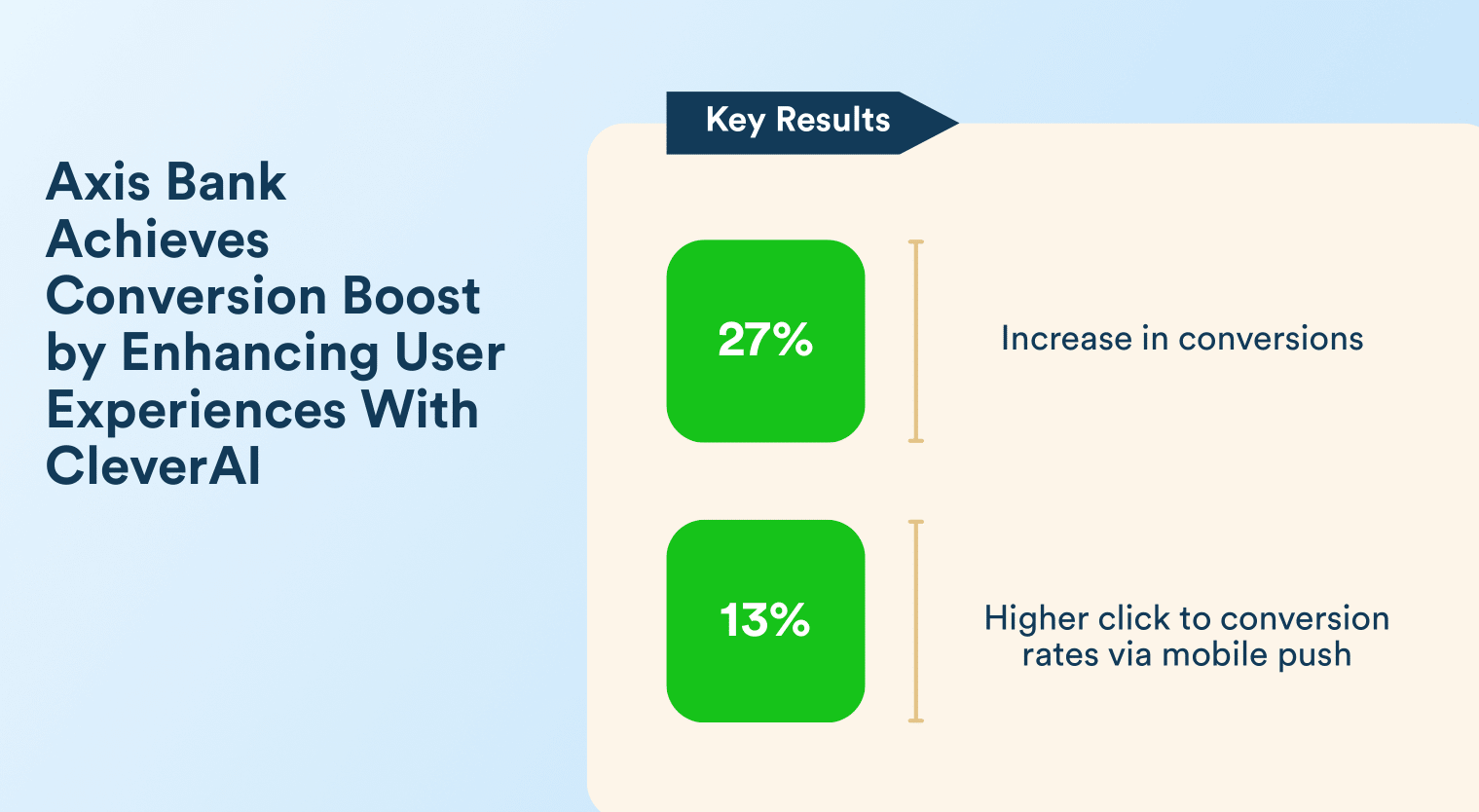
2. Sales
Agentic AI acts as an intelligent digital sales assistant for pipeline management, autonomously managing leads, updating CRM entries, and suggesting next-best actions for sales reps.
A great example of agentic AI in action is Snitch, one of India’s fastest-growing fashion brands. Using CleverAI, Snitch turned raw engagement data into sales-driving actions. The system identified customers likely to repurchase, personalized campaigns to re-engage them, and automated timely nudges across channels.
Snitch saw a 70% boost in revenue and doubled its first-month retention rate. By turning insights into instant action, Clever.AI helped Snitch accelerate conversions and scale personalized sales outreach.
3. Customer Support
Agentic AI can proactively detect user friction, recommend solutions, and execute interventions without human intervention.
For example, Niyo, a fintech platform, faced a disruption when a banking partner paused certain transactions, potentially leaving customers frustrated.
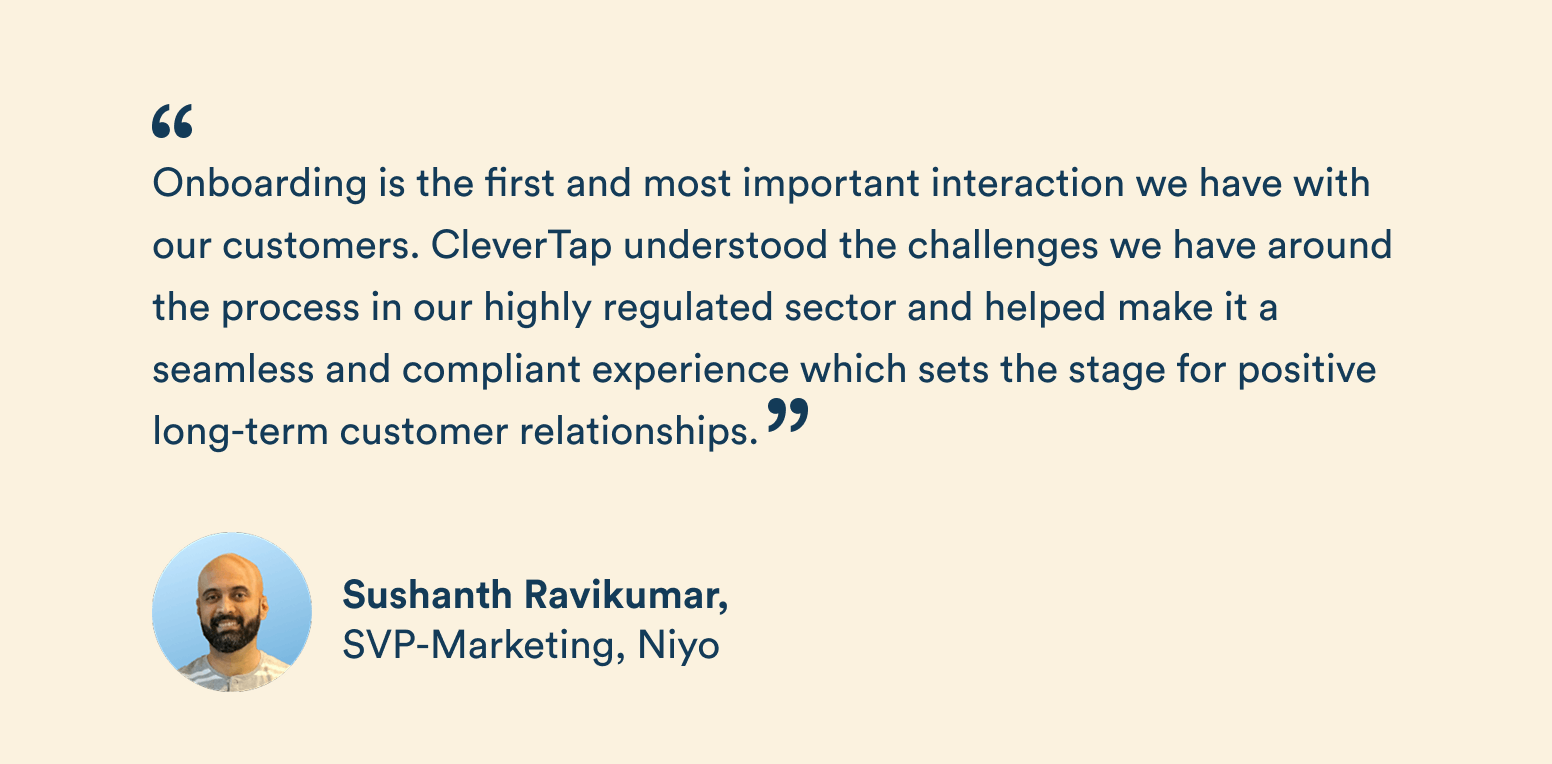
Using CleverTap’s CleverAI, Niyo’s system identified at-risk users, generated contextually personalized messages, and re-engaged them via email and WhatsApp. By autonomously monitoring behavior and adapting outreach, the AI system reactivated 12% of dormant users over two months, reducing support load and ensuring a seamless customer experience.
Benefits of Agentic AI for Marketers and Decision-Makers
Agentic AI offers compelling advantages for marketing teams and business leaders:
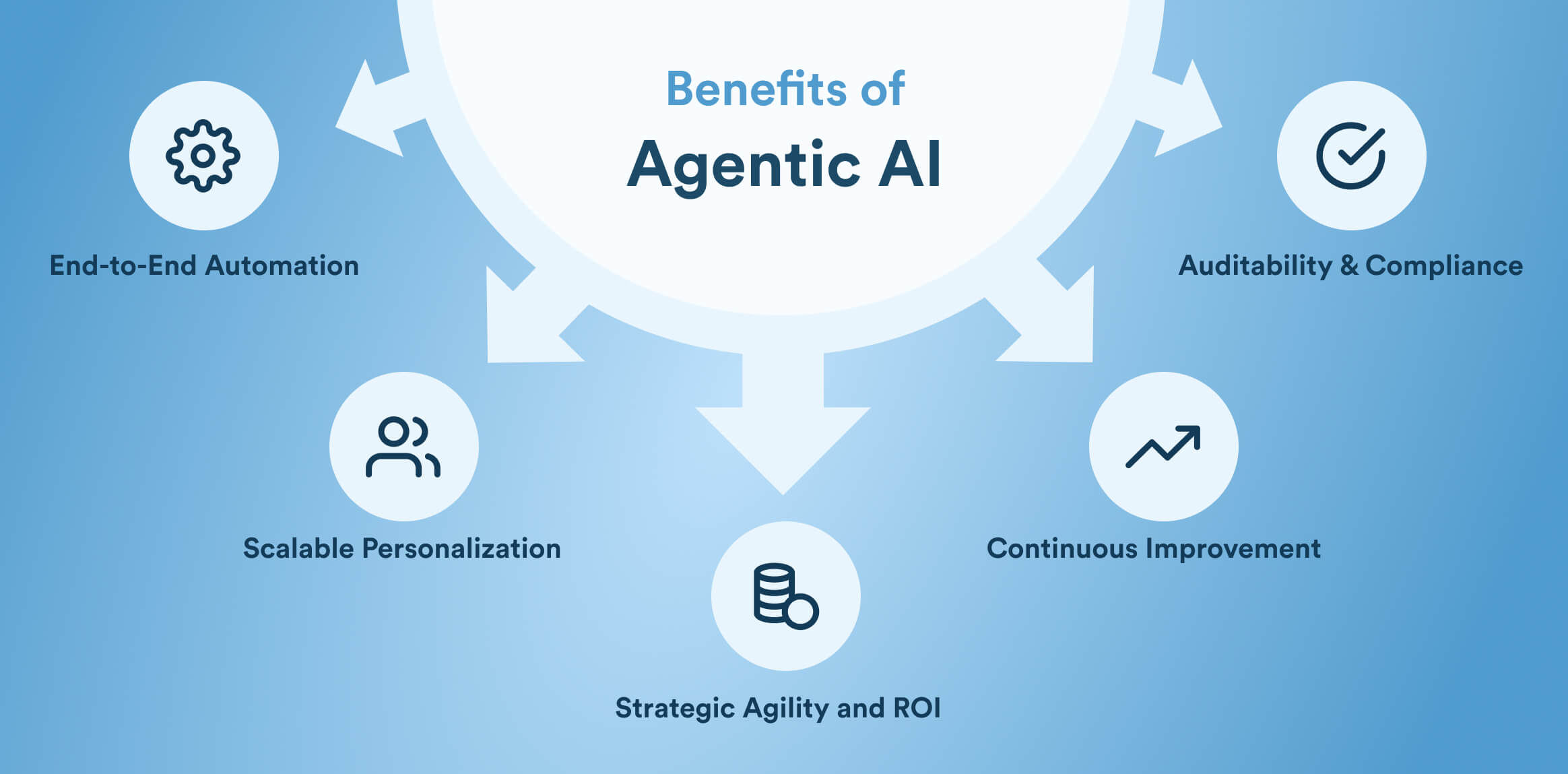
End-to-End Automation
Agents can handle entire workflows that once required many manual steps. For example, they can assemble multi-channel customer journeys, set up triggers, and monitor results automatically. This drastically cuts manual effort and reduces time-to-market for campaigns.
Scalable Personalization
By tailoring each interaction in real time, agentic AI deepens engagement. Agents use individual customer data to deliver highly relevant content in real time. Such intelligent agents deliver more comprehensive, accurate, and personalized responses because they adapt continuously to new input. This means achieving true one-on-one personalization at scale.
Strategic Agility and ROI
With routine execution offloaded, marketers can focus on strategy and analysis. Agentic AI bridges insight and action, leading to faster launches and measurable returns. These AI agents turn data-driven insights directly into executed campaigns, amplifying efficiency and ROI.
Continuous Improvement
Agentic AI learn from outcomes. They identify which tactics work and adjust future actions accordingly. Over time, this learning loop compounds gains in performance and efficiency, making marketing efforts progressively more effective.
Auditability and Compliance
Modern agentic AI platforms include features for transparency. Marketers set policies and guardrails, and the system logs all actions. CleverTap’s agentic AI is explainable, auditable, and adjustable, allowing teams to verify why an agent made a decision and keep activities on-brand. This built-in oversight helps ensure consistency and compliance even as AI automates processes.
CleverAI: Real-World Agentic AI for Marketing
CleverTap’s CleverAI bridges the gap between generative content and agentic execution. Beyond creating emails, push notifications, or in-app messages, it analyzes customer behavior and business goals to determine the best audience, channel, timing, and follow-up actions, within brand-defined guardrails. This enables marketers to focus on strategy and creative direction while the AI manages execution and continuous optimization.
At the core of the system is the CleverAI™ Decisioning Engine, which serves as the platform’s intelligence layer, powering a network of specialized agents and drawing insights from the CleverAI Dataverse and TesseractDB.
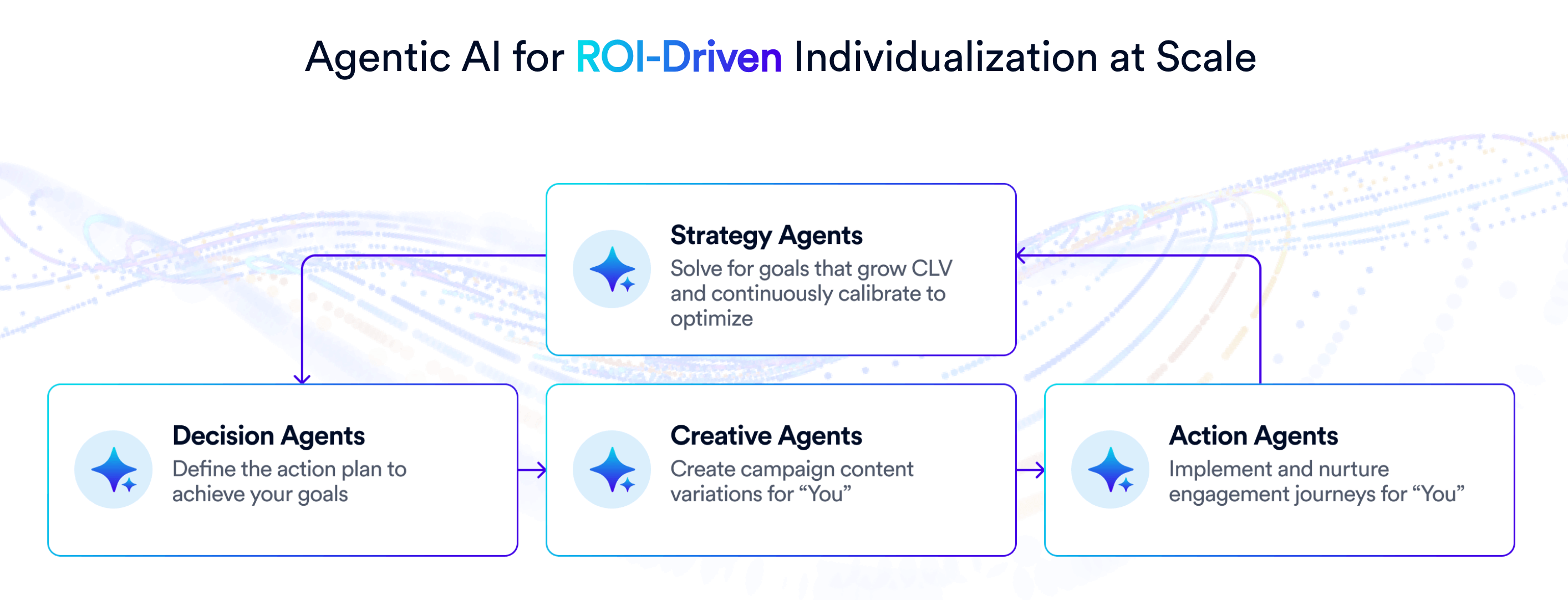
- Strategy Agents define high-level campaign objectives and map customer journeys aligned with business goals. They ensure every initiative contributes to long-term engagement and retention.
- Decision Agents analyze user data and behavioral patterns to match customers with the most relevant offers, actions, or experiences in real time.
- Creative Agents generate personalized content and creatives that maintain consistency with brand tone and audience preferences.
- Action Agents execute the chosen strategies by orchestrating timely and contextual interactions across channels, ensuring that every user touchpoint feels relevant and purposeful.
Together, these agents learn from every interaction, continuously refining their decisions and improving campaign effectiveness with each cycle of data and feedback.
Key Features of CleverAI
CleverAI combines autonomous decision-making, personalization, and journey orchestration to help marketers deliver campaigns that are both efficient and outcome-driven.
- Autonomous Campaign Execution: Automates multi-channel campaign decision-making.
- Real-Time Personalization: Adapts messages dynamically based on user behavior.
- Customer Journey Orchestration: Manages end-to-end journeys with automated triggers.
- Outcome-Focused Automation: Prioritizes measurable objectives like conversions and retention.
- Brand Guardrails: Ensures all autonomous actions comply with guidelines.
- Predictive Segmentation: Leverages AI to group subscribers based on past behavior, preferences, or engagement levels.
- Prescriptive Recommendations: Provides actionable recommendations to maximize conversions throughout the customer journey.
- Omnichannel Messaging: Integrates with various communication channels, ensuring consistent cross-channel engagement tailored to each user’s preferences.
- Automated Content Generation: Utilizes Generative AI to create contextually relevant campaigns that align with customer preferences.
Brands using CleverAI have achieved tangible results. For instance, Eatigo, a restaurant reservation platform, leveraged CleverTap’s AI-based recommendation engine to achieve a 100% growth in reservations, demonstrating the effectiveness of personalized engagement strategies.
The Future of Agentic AI
Agentic AI is still emerging, but many experts see it as the next era in business technology. Analysts predict it will soon become standard. IDC even suggests that AI agents could replace entire software applications.
Here’s what the future looks like:
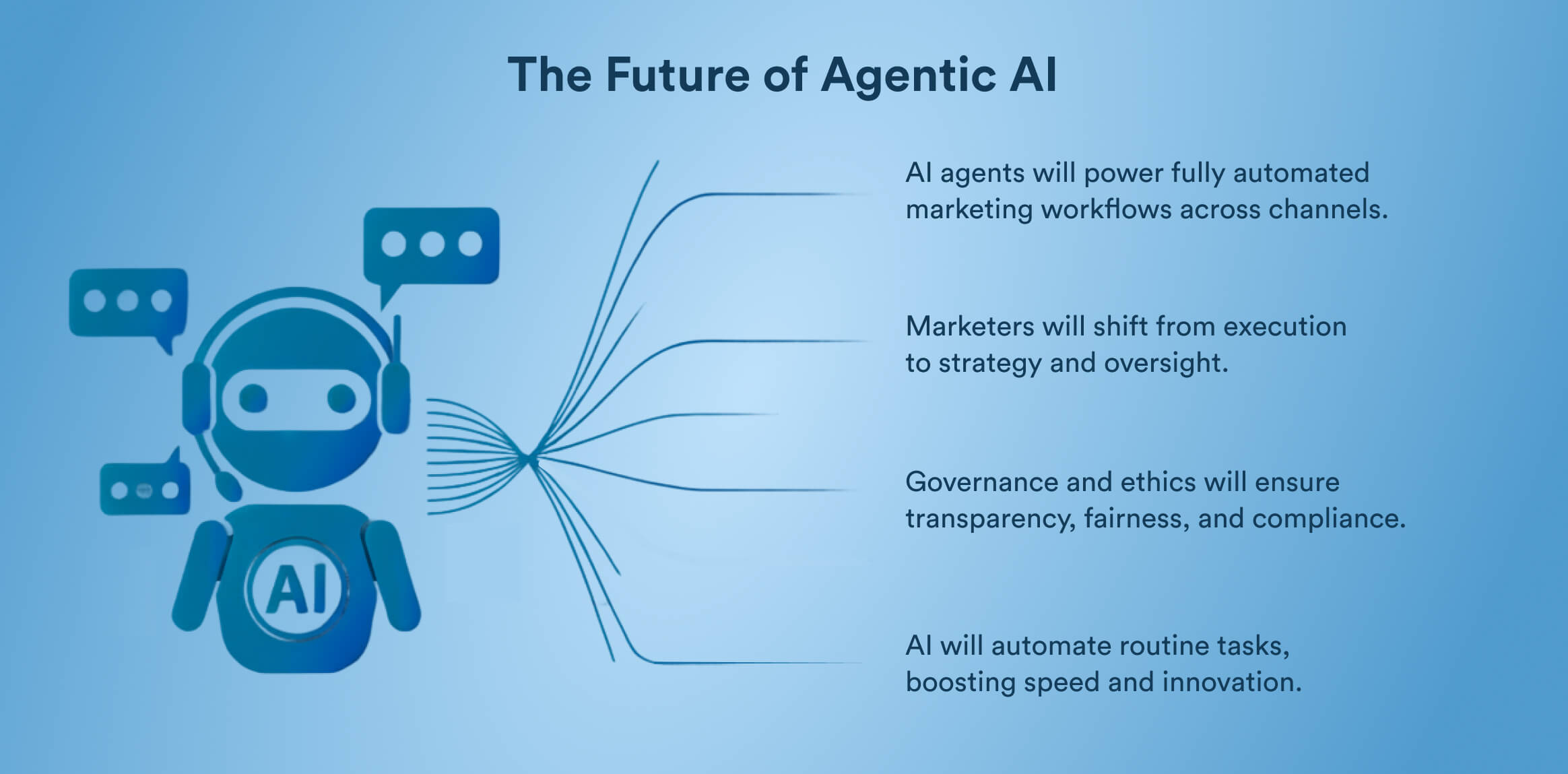
1. Evolution of Marketing Tech Stacks
Marketing tech stacks are shifting toward intelligent automation. Integrated decision engines powered by predictive analytics and customer data will drive agentic systems. Generative AI will supply creative assets while agents manage campaigns, enabling end-to-end orchestration across channels from insights to execution.
2. Changing Role of Marketers
The role of marketers is shifting from execution to strategy. Instead of manually handling every task, marketers will focus on high-level goals while AI agents carry out execution. Their responsibilities will evolve to include monitoring AI guardrails, training models, and ensuring alignment with brand strategy.
3. Governance and Ethics
Governance and ethics will be essential as AI grows in marketing. Systems must provide transparency by logging and explaining decisions so marketers can review and adjust. Safeguards are needed to ensure fairness and protect privacy, reducing bias and compliance risks. New roles, such as AI agent managers, may emerge to oversee multi-agent systems.
In the long term, AI agents will gain greater autonomy and handle most routine tasks, enabling more agile marketing through continuous optimization. This shift will act as a force multiplier, allowing marketers to focus on innovation and creativity while AI manages execution.
The Next Step for Marketing Leaders
Agentic AI marks the next leap in marketing technology, moving from content creation to autonomous decision-making and execution. For leaders, this shift means faster campaigns, deeper personalization, and measurable ROI gains.
By embracing agentic AI, marketing teams can focus on strategic planning and creative innovation, while AI handles execution, optimization, and real-time adjustments. Organizations that adopt this approach gain a competitive edge, delivering more relevant, timely, and effective AI-enabled customer experiences. With platforms like CleverTap, marketers can transform insights into action at scale, continuously learning and improving campaigns to drive sustainable growth.
Explore how CleverAI can help you unlock agentic intelligence in your customer engagement strategy.
Subharun Mukherjee 
Heads Cross-Functional Marketing.Expert in SaaS Product Marketing, CX & GTM strategies.
Free Customer Engagement Guides
Join our newsletter for actionable tips and proven strategies to grow your business and engage your customers.

